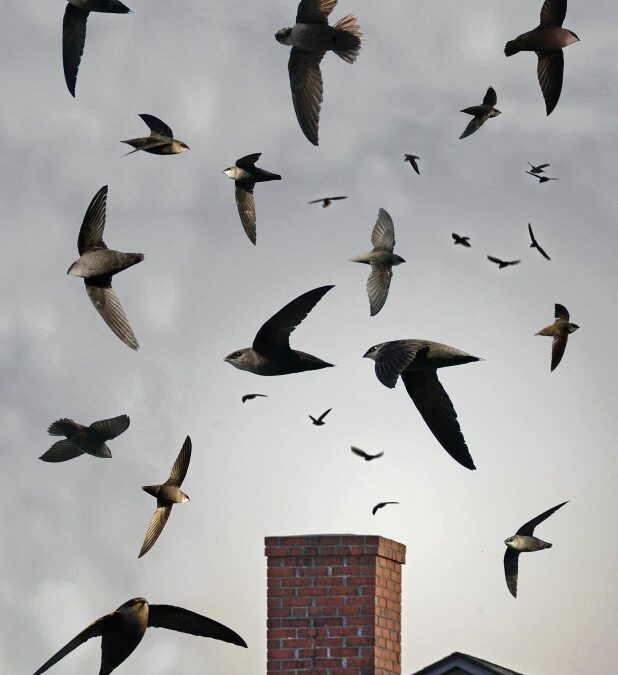Recently at Westport Woods, we discerned the presence of a visitor–actually, a number of visitors. Stand in a certain spot in the offices and a faint, sometimes cacophonous sound seems to indicate that there might be bats in our belfry (or at least in our attic). A visit from a professional revealed, however, that the newcomers in our chimney were not mammalian at all, but rather a roost of Chimney Swifts.
Dwelling in a Chimney Near You
I commute to the beautiful Farm Coast from the city of Providence. One of the joys of living in the city is the spectacular aerial display of Chimney Swifts at the end of a summer day. As though they share one mind, these incredible birds flitter about high in the sky, circling their roosting site–usually an old chimney stack–and, almost as one, descend into their communal abode.
The urban setting, however, is not the only place where these highly adaptive creatures thrive. They often take up residence in rural homes, where a chimney might not be capped. Once settled, their calls and squeaks surely might be mistaken for that of a colony of bats.
Like bats, these avian acrobats once resided primarily in caves and other hollow dwellings but over time, their natural habitats dwindled. In their stead, swifts have found suitable dwelling places in old industrial sites and residential chimneys, thus inspiring their name.
A Population to Watch – and Learn from
In spite of their creativity and adaptability, counts for the swift population indicate a decline in their numbers. There are a number of reasons why this might be. One possibility is the widespread use of insecticides, which tamp down their main source of nutrition (swifts are voracious insectivores, constantly catching their prey on the wing). Another possibility might be the stagnation or even decline in roosting sites, as development in cities and more rural settings shift to high-volume dwellings without chimney stacks to take refuge in.
As we keep an eye on these incredible birds, it’s both useful and inspiring to keep in mind how they have been able to suit their lifestyle to a changing world. Theirs is a story of endurance and resilience. When they depart at the very end of summer, they leave in their wake a silence once filled with chirps and calls, sounds which we perhaps take for granted. In that silence, is a promise of the spring to come.
…The swifts
Materialize at the tip of a long scream
Of needle. “Look! They’re back! Look!” And they’re gone
On a steep
Controlled scream of a skid
…
They’ve made it again,
Which means the globe’s still working, the Creation’s
Still waking refreshed…
– From “Swifts,” by Ted Hughes


